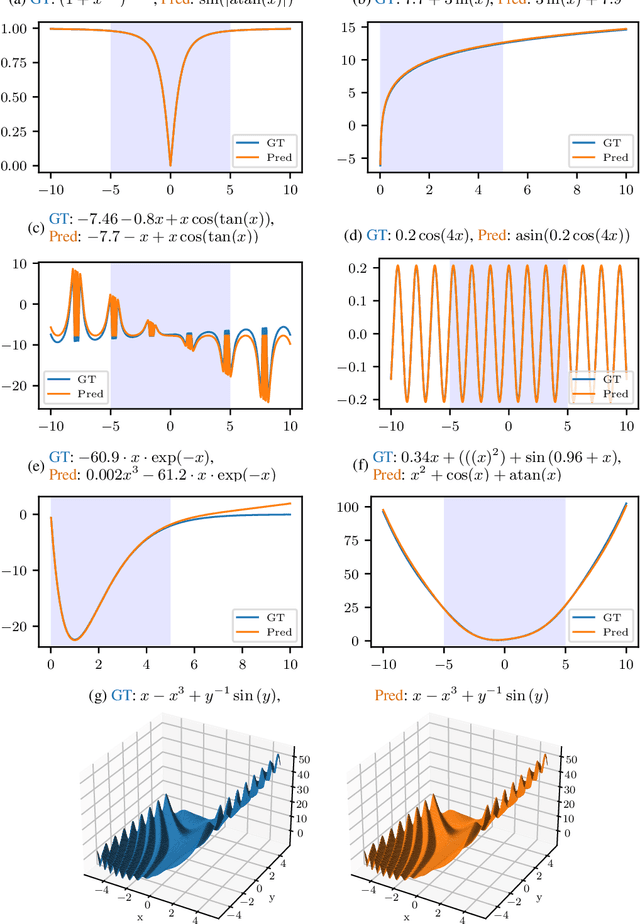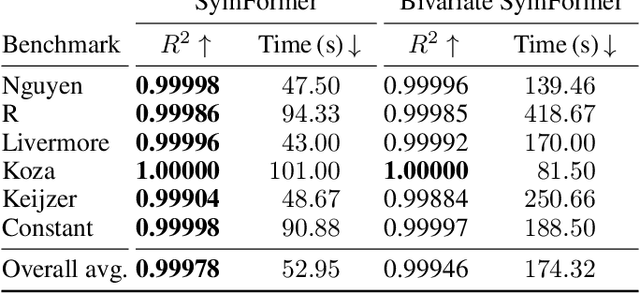Martin Vastl
SymFormer: End-to-end symbolic regression using transformer-based architecture
Jun 01, 2022



Abstract:Many real-world problems can be naturally described by mathematical formulas. The task of finding formulas from a set of observed inputs and outputs is called symbolic regression. Recently, neural networks have been applied to symbolic regression, among which the transformer-based ones seem to be the most promising. After training the transformer on a large number of formulas (in the order of days), the actual inference, i.e., finding a formula for new, unseen data, is very fast (in the order of seconds). This is considerably faster than state-of-the-art evolutionary methods. The main drawback of transformers is that they generate formulas without numerical constants, which have to be optimized separately, so yielding suboptimal results. We propose a transformer-based approach called SymFormer, which predicts the formula by outputting the individual symbols and the corresponding constants simultaneously. This leads to better performance in terms of fitting the available data. In addition, the constants provided by SymFormer serve as a good starting point for subsequent tuning via gradient descent to further improve the performance. We show on a set of benchmarks that SymFormer outperforms two state-of-the-art methods while having faster inference.
Predicting Typological Features in WALS using Language Embeddings and Conditional Probabilities: ÚFAL Submission to the SIGTYP 2020 Shared Task
Oct 08, 2020


Abstract:We present our submission to the SIGTYP 2020 Shared Task on the prediction of typological features. We submit a constrained system, predicting typological features only based on the WALS database. We investigate two approaches. The simpler of the two is a system based on estimating correlation of feature values within languages by computing conditional probabilities and mutual information. The second approach is to train a neural predictor operating on precomputed language embeddings based on WALS features. Our submitted system combines the two approaches based on their self-estimated confidence scores. We reach the accuracy of 70.7% on the test data and rank first in the shared task.
 Add to Chrome
Add to Chrome Add to Firefox
Add to Firefox Add to Edge
Add to Edge